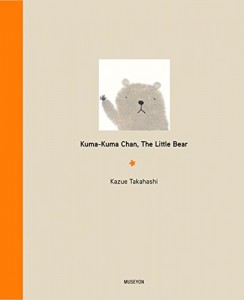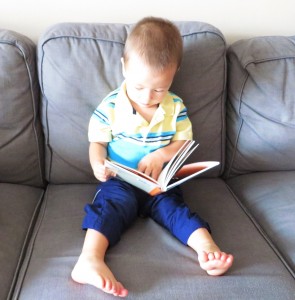JQ Magazine: Book Review — ‘Kuma-Kuma Chan, the Little Bear’

“The simplicity of the storyline and illustrations makes it easy for young readers, and also invites parents and children to dive deeper and create their own dialogue and inquisitions.” (Museyon Inc.)
By Heather Wilson Tomoyasu (Ibaraki-ken, 2004-06) for JQ magazine. Heather is a blogger on her site US-Japan Fam, owner of Miny Moe (multi-brand variety packs that allow parents to find the best brand for their baby), founder of Tunes 4 Bay Ridge Tots, and mommy to her yummy toddler, Kenzo! You can follow and connect with her on Twitter, Facebook, Pinterest, and Instagram.
I’m a sucker for the word chan. Seriously. I don’t know what it is; chan is just so endearing and cute and, well, Japanese!! If you’re a chan-aholic like me, get excited, because there is a new children’s book coming your way that is all about the chan!
The beloved children’s book, Kuma-Kuma Chan, the Little Bear, originally written by Kazue Takahashi and published in Japan in 2001, has just been translated into English, republished by Museyon, and will be available in stores and online Dec. 1 (just in time for those stocking stuffer purchases—hoorah!!). This hardcover book is small, about 5” x 7”, with 52 pages of simple-yet-adorable illustrations and minimal text. The story is short and sweet, with Takahashi describing what she imagines Kuma-Kuma Chan to do every day. With each turn of the page, you are greeted with an illustration and a single sentence describing a different chore or activity, such as shopping, gardening (and sometimes hurting his back), and personal hygiene such as, “He trims the nails of his paws. Then he lines up the cut nails and gazes at them.” I mean, come on, that is kind of hilarious.
The simplicity of the storyline and illustrations makes it easy for young readers, and also invites parents and children to dive deeper and create their own dialogue and inquisitions. When Kuma-Kuma Chan stares into a mirror and “wonders where to go with his new shoulder bag,” I ask my son what he thinks is in the bag and where Kuma-Kuma Chan might go. I think maybe he’ll go take out some books at the library and stop by for some kaitenzushi. Or perhaps he’ll go play pachinko!
Takahashi also dedicates a set of pages to each of the four seasons, lest we can ever forget that Japan has four distinctive seasons, am I right? In winter, he doesn’t sit lazily under thekotatsudrinking hotsakeand eatingnabe,but rather“rolls across the room to stay in the sunlight.” Yep, that sounds like something a cute little bear, or my toddler, might do in winter!
While the book is written and illustrated by a Japanese native, it does not depict Japanese life or culture per se. As you read the story, you can imagine Kuma-Kuma Chan living anywhere in the world, really. Personally, I like to imagine him somewhere in the mountains near Nagano. If imagining isn’t quite enough and you’re feeling especially ambitious in wanting to brush up on your Japanese, you can translate it yourself or even buy the Japanese version and read them side by side. You can also check out Takahashi’s other Japanese children’s books, including Kuma Chan on a Rainy Day and Nyaako Chan, though none of her other books have been translated into English yet.
Kuma-Kuma Chan, the Little Bear is recommended for children ages three to five, and is expected to soon become a beloved classic like Winnie the Pooh and A Bear Called Paddington. You can find more information about the book, the author, and the publisher here!
For more JQ magazine book reviews, click here.



Comments are closed.